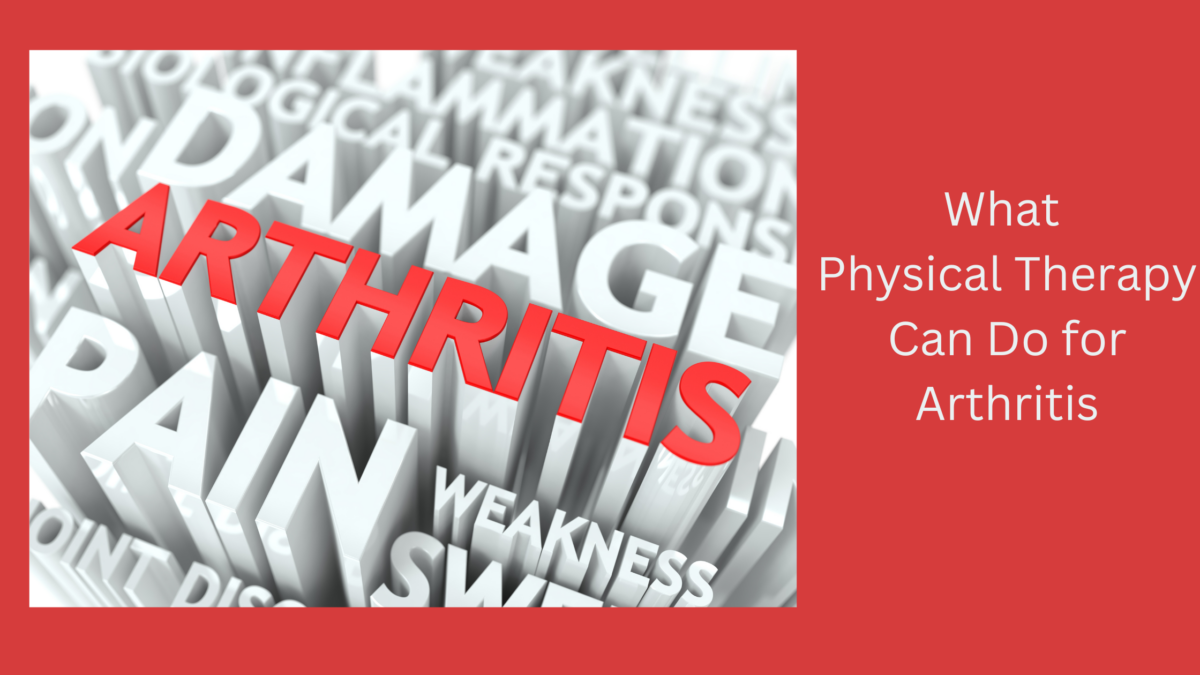Arthritis is a chronic condition that causes inflammation of the joints. It can cause pain, stiffness, and swelling. The hips, knees, hands, and spine are the most commonly affected joints. Arthritis is not a single disease but an umbrella term that includes a variety of different types. Some of the more common examples are osteoarthritis, rheumatoid arthritis, gout, psoriatic arthritis and ankylosing spondylitis.
While physical therapy might not be the first treatment you think of for arthritis, it probably should be. A lot of people with arthritis choose to use medication to manage their pain, stop doing activities that hurt, and wait for things to get bad enough to have a joint replacement. But this isn’t a great plan. All medications have side effects, even over the counter ones. Reducing activity leads to muscle atrophy and even stiffer joints. Inactivity is known to negatively impact all kinds of other health conditions, from mood disorders to cardiac and endocrine system function. And even though joint replacement surgery usually has good outcomes, it does come with its own set of risks, as well as a lengthy and often painful recovery. So if that doesn’t sound like the plan you want to follow, physical therapy might be for you. Research has shown that PT leads to good outcomes for patients with arthritis including reduced pain, better mobility, and delaying or preventing surgery.
Physical therapy has been extensively researched as a treatment for arthritis, and demonstrates good outcomes. Physical therapists typically start with exercise as the base for arthritis treatment. Exercise helps to regain lost joint motion, decrease feelings of stiffness, and strengthen muscles surrounding the affected joint. These benefits are all somewhat obvious. What surprises many people is that exercise has been shown to be as effective as medication for pain relief in many types of arthritis, without the side effects.
Physical therapy has more to offer people with arthritis than just exercise, though. Education helps people understand their condition, what to expect, and how to manage it. As experts in human movement, physical therapists are especially good at helping people modify the way they perform certain tasks or activities to reduce strain on joints affected by arthritis. They can also suggest ways to modify the environment at work or home to reduce pain and improve function. They may also suggest things like braces, orthotics, or other devices that can help maintain mobility and reduce pain. On top of all of that, arthritis rehabilitation under the direction of a physical therapist has been proven to be a cost effective treatment, too.
Working with a physical therapist is a recommended first line treatment for many types of arthritis. Now that you have a better understanding of what PT can do, hopefully you’ll think of PT first when you think of arthritis too. An arthritis diagnosis does not automatically indicate the end of quality activity. Your physical therapist can help you to feel and function better and often significantly extend the time that you can spend comfortably and actively participating in all of the activities that you enjoy most!
REFERENCES:
- Research (peer-reviewed journals)
- PT for juvenile RA – https://pubmed.ncbi.nlm.nih.gov/1946625/
- PT for hip and knee OA – https://pubmed.ncbi.nlm.nih.gov/33034560/
- Systematic Review for Juvenile RA – https://pubmed.ncbi.nlm.nih.gov/28729171/
- Additional Articles and Content
- Effectiveness and Cost-Effectiveness of Physical Therapy for Knee Osteoarthritis- https://www.rheumatology.org/About-Us/Newsroom/Press-Releases/ID/718
- Can physical therapy reduce arthritis pain? – https://www.medicalnewstoday.com/articles/physical-therapy-for-arthritis

